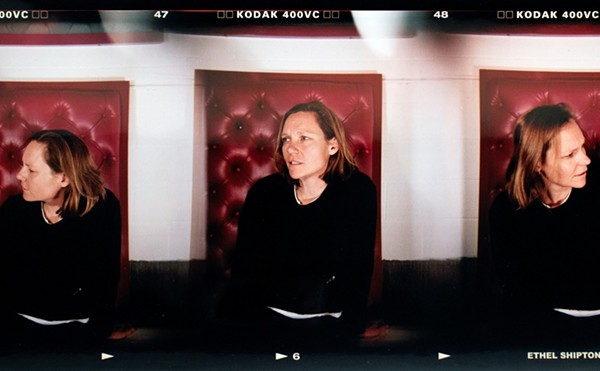For a few weeks I have been focused on visiting artists’ studios in some attempt to decide what the Contemporary Art Month Perennial exhibition will look like. Throughout the quest I have had the increasingly nagging feeling that I need to know more about the history of the Guadalupe Cultural Arts Center and the community it serves in order to gain some clarity.
So I went to the community, and last week I had the invaluable experience of sitting with community member, longtime activist, founding member of the Guadalupe Cultural Arts Center and accomplished artist David Mercado Gonzales and his wife, Irma. I will never be articulate enough to describe how emotional the experience was as the three of us sat and I listened to David retell every minute detail of the history he holds so dear.
The evolution of the Guadalupe began sometime in the late 1960s. The West Side of San Antonio was no stranger to the mounting socio-political crises that were gaining momentum throughout the states. In the midst of swirling Civil Rights movements, anti-Vietnam protests, desegregation and freedom of speech movements, a grocery story owner by the name of Mr. Calderon began to screen short films in an empty lot across the street from his store on the corner of Trinity and San Carlos. What began as short film screenings and family-style entertainment grew into the Santa Cruz Center. During these early years, a collective of young artists and community advocates was born that would set the stage for visual arts and activism in the neighborhood surrounding what we now know as the Guadalupe Cultural Arts Center.
What I learned from David is that every story is also convoluted and complicated. While the Santa Cruz Center was the impetus, many of the players changed throughout the 20-year prehistory of the Guadalupe. Artist collectives were formed, moved from location to location, dismantled, shifted focus to other advocacy areas such as physical and mental health issues, and the narrative ebbed and flowed from one path to another. Yet what was most astounding and important to me was that there was always one common denominator within this history: The visual arts remained a strong tool to continuously better the community as a whole.
David recounted stories of how visual arts workshops and community printmaking brought together subsects of economic classes and rivaling gangs. He went on to retell the specific details of how the Guadalupe grew—one historic building at a time—to provide the neighborhood with an outlet that always focused and supported the visual. However, that history began to shift as the city grew, as single member districts were established and as younger generations moved away to pursue higher education. Slowly the torch lost its flame as fewer became available to take up the next cause.
I sat on the edge of my seat and simply listened with only a handful of questions interjected for clarity during our time together. I listened to David recount his lifelong passion for art, his home, his family, and I could feel my eyes welling up as he bragged about his wife who stood by his side through it all. At the end of our meeting it was obvious that David and Irma had affected me more than I would ever affect them, and it was clear that I owed them an exhibition that had their hearts and stories at the forefront of whatever curatorial process would come next.
I continued on with my studio visits for the rest of the day, but with a much clearer idea that the CAM Perennial exhibition hosted by the Guadalupe Cultural Arts Center needed to be something that empowered its audiences, that provided moments where authorship was relinquished by myself as the curator and the exhibiting artists. It was suddenly obvious to me in that instant, sitting in one of the conference rooms at the Guadalupe, that the exhibition needed to be one that relied as heavily on the community as it did on the artists.
This year the CAM Perennial will be shaped by the unabashed respect I have for David and Irma and the center they worked to build, as well as the neighborhood with longstanding respect for the visual and its important place in the history of San Antonio.
I have no desire to curate an exhibition that will have no life beyond the opening, and I want to be cognizant of both audiences that will converge in the Guadalupe’s space: the community surrounding the Center itself and the CAM general audience.
What David explained to me is that every history has a prehistory, and while there’s simply no space to completely transcribe the invaluable two hours I spent with him, what I can recount is a brief summation of the incredible relationship that grew between all of us as we conversed.















